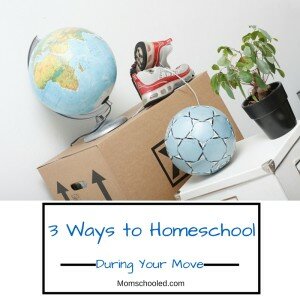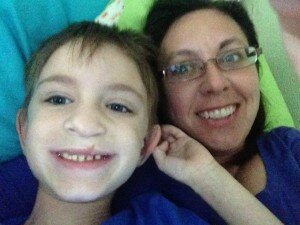
Remember a couple of weeks back when we posted that we finished getting the homeschool area organized? Well…we found a house that we really like, and now we are moving all of those wonderfully organized materials to the new place. Moving is stressful even if you don’t depend on your home as your place of work, college course central, and homeschool. When your house has to be all things to all people all day, moving can get a bit overwhelming. If you are a homeschool family about to move, here are some of the suggestions I have to make the move go more smoothly
Purge, Purge, Purge
I know every article about moving emphasizes the importance of getting rid of things, but this time, I have found even greater use in getting rid of as much as I can. There are fewer boxes left in the living areas which allows us some normalization for a little longer. As soon as you find out you are moving start the purging. Don’t worry about packing yet. You are getting rid of stuff so that you don’t have to pack it.
What we purged:
- Furniture: This move required a serious purging mission as we are moving to a smaller house. We went through the new house, taking measurements for current furniture, deciding a bit of our furniture would not be coming with us. We had a garage sale and sold some pieces on Craigslist. We got rid of two china cabinets, a small chest of drawers, a small desk, a side table, an arm-chair, and a night stand.
- Clothes: Anything you haven’t worn in a year or has a stain on it should go automatically. If you are holding on to something you loved when you were a different size, ask yourself if you would really wear it today, if you were that size again. Most of the time, if we are honest the answer is no. I got rid of two and a half garbage bags of clothes. Kids’ clothes that have been outgrown are a no brainer. Total clothes: about four garbage bags.
- Kitchen: We seem to accumulate tons of gadgets, cups, and knickknacks. If we haven’t used them in years, even if they were gifts from Aunt Lulu ten years ago, I got rid of them. Remember the goal is less to pack and less to unpack when you get to the new place. Take this opportunity to go through the canned food as well. If nobody has eaten the canned asparagus yet, they probably aren’t going to. Total kitchen: almost two boxes worth of glasses, mugs, and various unused items.
- Toys and kid stuff: J-man had a whole drawer full of coloring books that he didn’t even know were there. They went away and he didn’t notice. Anything not played with in six months can make another child happy. We have an exception when it comes to Legos. Legos are sacred.
- Homeschool stuff: This is the hard one for us. He had about 20 books that were duplicates because we apparently need a book spreadsheet so the grandparents don’t buy the same ones or ones he already has. So those were out. We aren’t really giving anything else up here, but we went through these materials pretty thoroughly
Our total purge required four trips to goodwill, netted more than $500.00 in sales, and probably kept me from having to pack about 10 of the medium-sized boxes. This has kept the homeschool room free of boxes and clutter during the worst of the packing!
Stage 2:
Pack every other room first! My room, my living room and most of the kitchen are packed. Even his room has been packed up to some degree. We are leaving out several novels in which he is interested and all of the non-fiction sets until the night before we leave. Most of the non-fiction sets are in large baskets, so I’m just going to wrap them in plastic wrap, making unpacking the books we use the most that much easier.
So, at this point I’m a week out. The house is a mess and time is ticking away. This is not the time to be introducing new units or do multi-step projects. This week (and probably next week while unpacking) we will be utilizing the free three month trial at Gifted and Talented’s Red Bird Math, we will finish reading A Wrinkle in Time, and keeping up with our pen-pal correspondence. We will still go to our gymnastics and we will be getting ready for the homeschool co-op we have joined.
Stage 3: Moving Day and Unpacking
J-Man will be at his granny’s house during the day before and day of the move. During this time the priority for set up is the homeschool space and his room. I have ordered a number of paper brochures about Washington DC to arrive right about when we are moving in, to occupy him. While I am working on unpacking, I am going to have him start working on picking the must visit places when we visit DC in October. The fact that these brochures are coming in the mail, means that they will be new materials that he hasn’t seen and will probably garner more interest. The key here is to plan activities for next week that he can do semi-independently.
Moving at any time can be a dreaded chore, but with patience, planning, and effort it does not have to derail your homeschool. Have you moved while homeschooling, please share some of your tips with us!
![IMG_2002[1]](https://momschooled.com/wp-content/uploads/2015/09/IMG_20021-300x225.jpg)
![IMG_1985[1]](https://momschooled.com/wp-content/uploads/2015/09/IMG_19851-e1441070924521-225x300.jpg)
![IMG_2020[1]](https://momschooled.com/wp-content/uploads/2015/08/IMG_20201-169x300.png)
